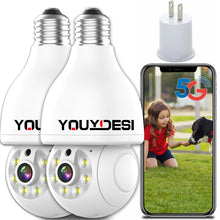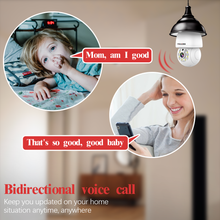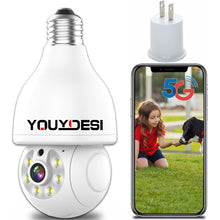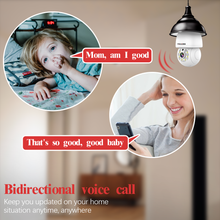1. Electronic Signal Interference:
Surveillance cameras are highly integrated systems and can be susceptible to external electronic signal interference. If the monitoring screen appears to be flickering or displaying stripes, it's possible that the camera is being affected by interference. During installation, it's important to place the camera away from potential electronic signal interference sources.
2. Improper Focus Adjustment:
After adjusting the lens zoom, it's essential to focus it correctly. Within a certain depth of field (which may sometimes be quite small), clear focus can be achieved. If the image is not in focus, it might be due to the focus not being adjusted to the optimal position.
3. Dirty Camera Lens:
Dirt or smudges on the camera lens can directly lead to a blurry or hazy surveillance image. It's important to avoid touching the lens with your hands during installation, as fingerprints can easily be left on the lens. If the lens does get dirty or dusty, it should be cleaned with a specialized lens cleaning tissue rather than using regular paper towels or cloth (as this can damage the lens coating).
4. Electronic Shutter or White Balance Settings:
Cameras typically come from the factory with various settings adjusted to their best default positions. Unless there is a specific need, it's generally best to keep these default settings unchanged during installation.
5. Rear Focusing Adjustment:
The rear focusing (back focal length) refers to the distance from the last lens surface vertex to the focal plane. After zoom and focus adjustments, if the image remains unclear, it could be related to rear focusing issues. Some cameras or lenses come with rear focusing adjustment mechanisms. If such issues are confirmed and there's no rear focusing adjustment available, the camera might need to be sent for repair, or a lens adapter might be required.
6. Inadequate Camera or Lens Resolution:
Achieving high-performance surveillance relies on the perfect combination of the camera body and lens, with matching resolutions. Using a standard definition analog camera with a high-definition lens, for example, will not yield a clear image. Conversely, pairing an HD camera with an ordinary lens might not allow the camera's megapixels to be fully realized.
7. Use Quality Lenses to Reduce Maintenance Costs:
In security applications, front-end equipment is often exposed to environmental factors like moisture, vibration, and temperature fluctuations. As a result, after some time, focus shifts can lead to issues like blurry images, instability, or rapid aging. Therefore, it's important to consider system maintenance costs during the construction phase.
Maintaining clear and reliable surveillance camera images is crucial for indoor/outdoor home security and is essential for both wired and wireless cameras, including light bulb cameras. Proper installation and maintenance can help ensure optimal performance.










